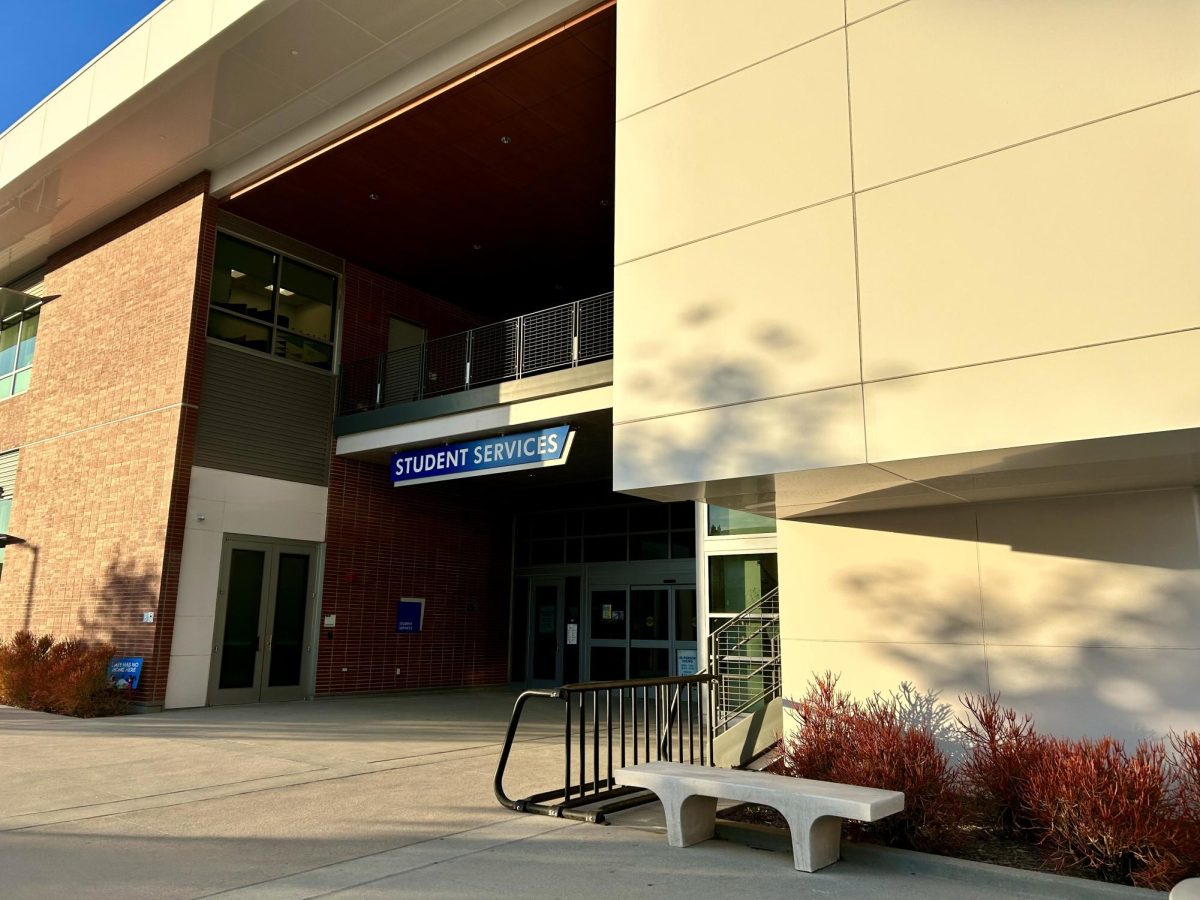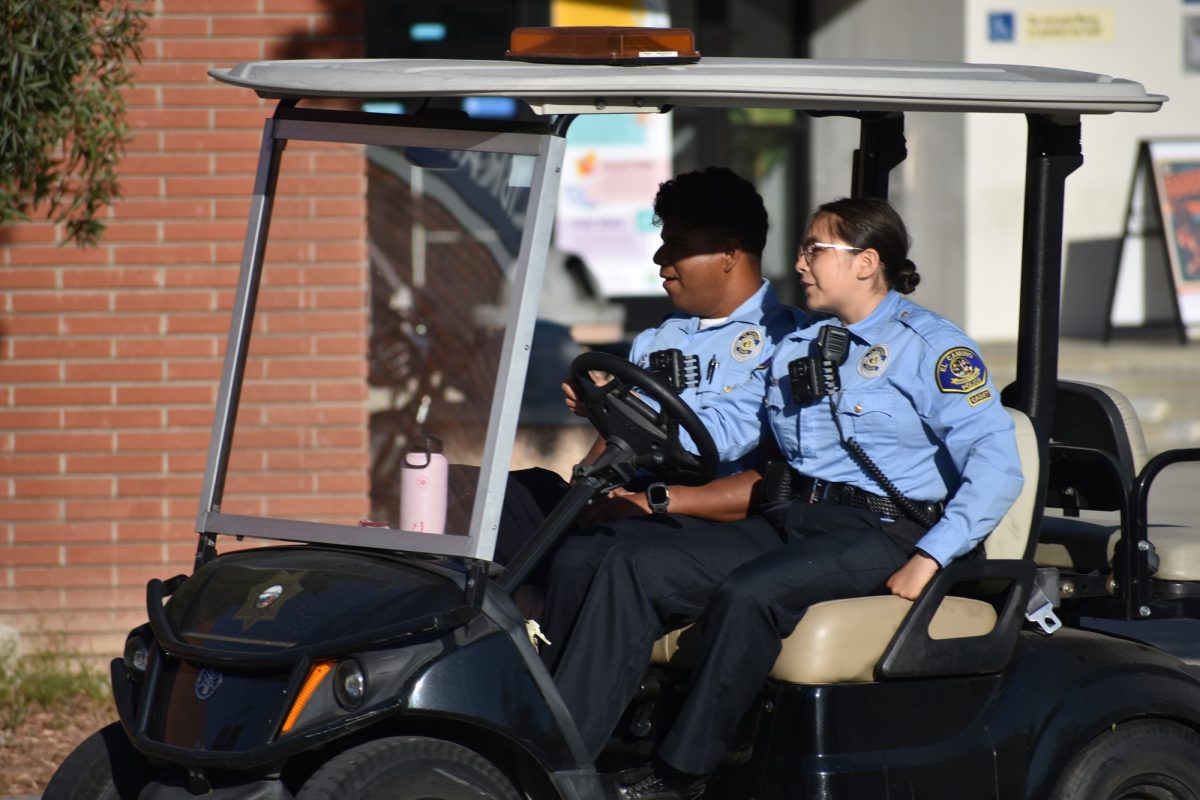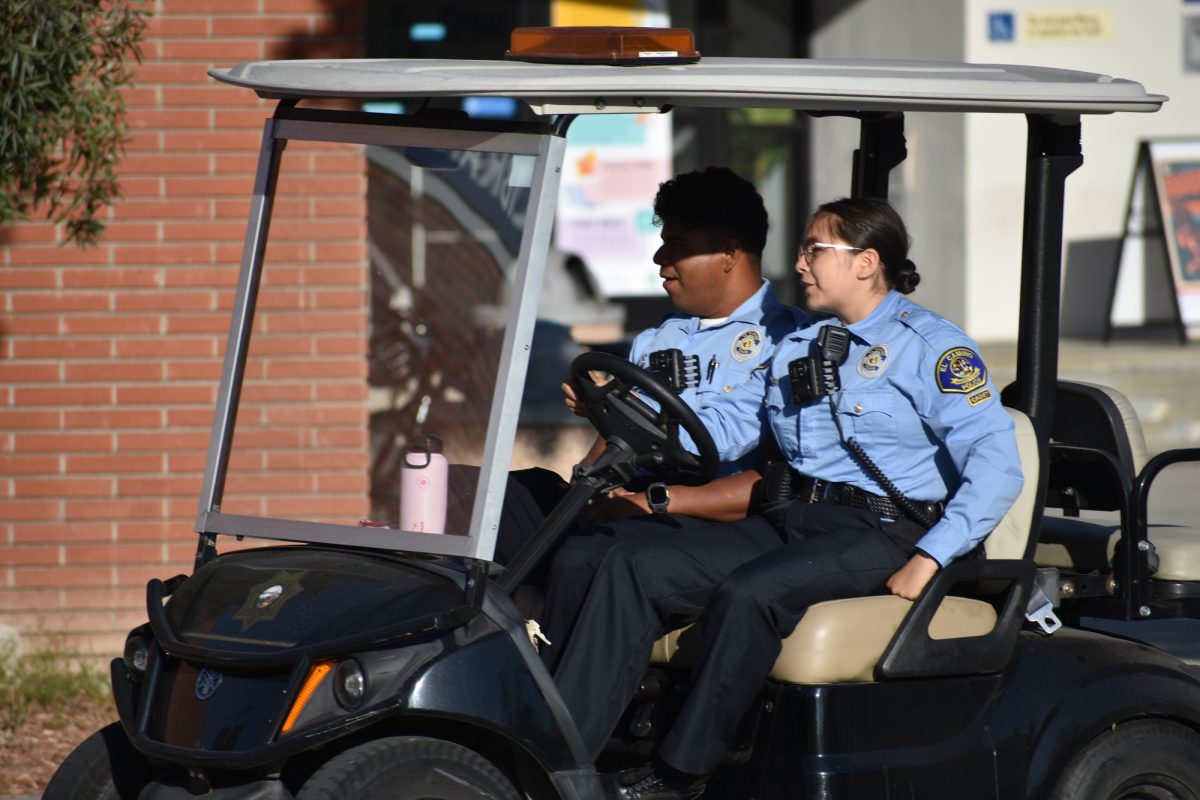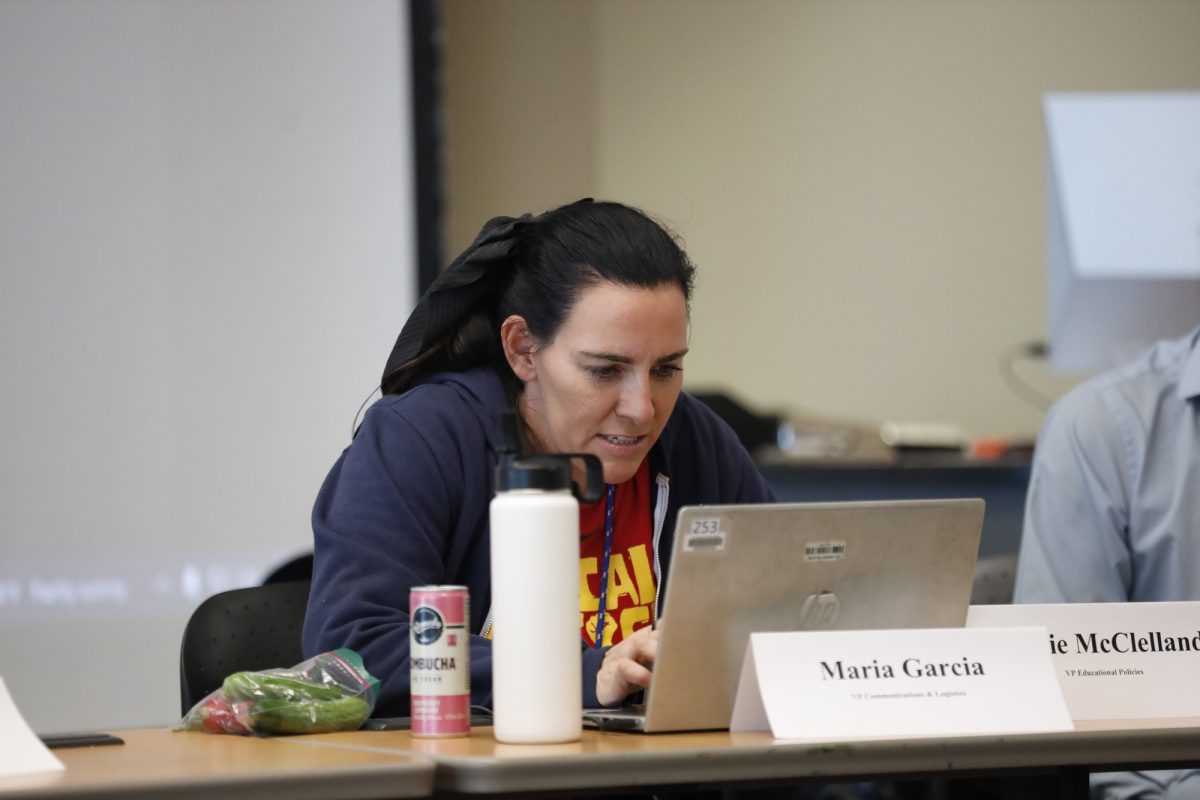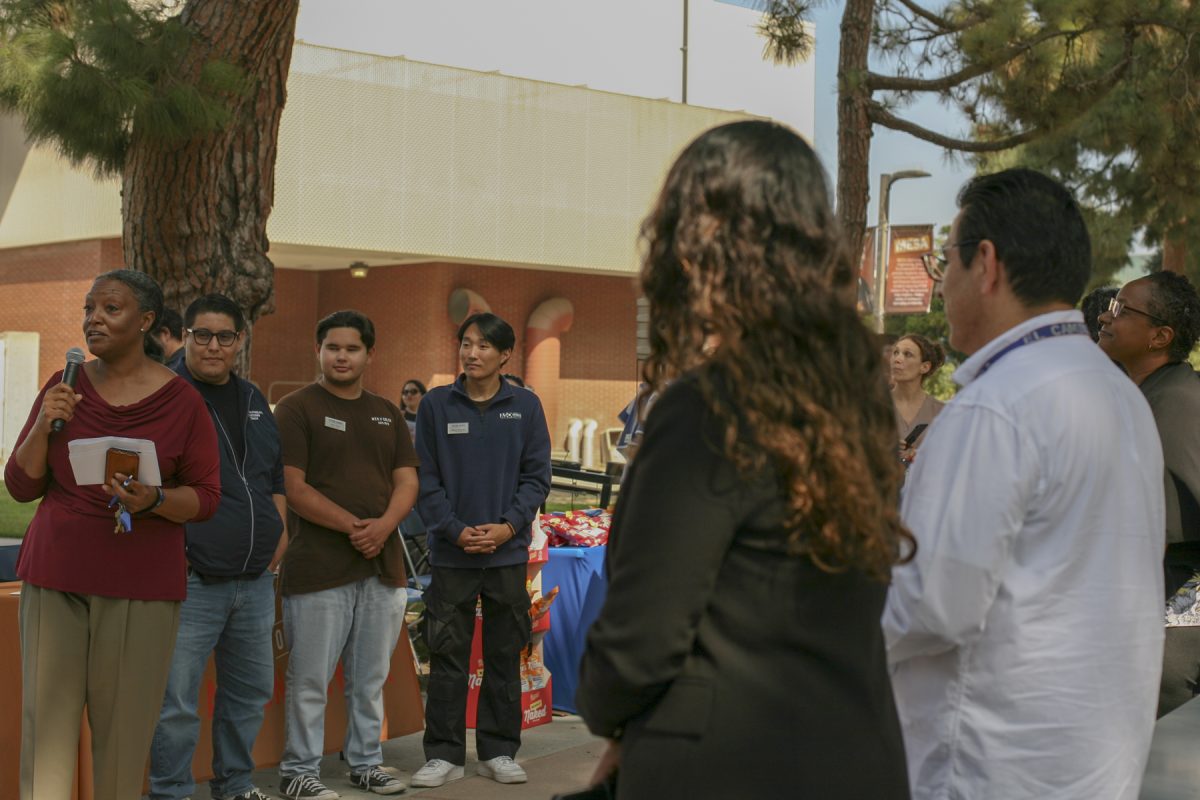El Camino College emerged with the highest transfer rates to California State University Long Beach spanning from 2020 to 2023, according to the El Camino Office of Institutional Research and Planning Database.
The office guides research and institutional planning for student success at El Camino and provides data on demographics and trends.
Paul Feist, the vice chancellor for communications and marketing for the California Community College Chancellor’s Office, highlighted the CCC’s Research and Planning Group as another valuable student resource.
“They’ve done a lot of research on transfer and identifying friction points barriers and possible solutions,” Feist said.
The Research and Planning Group is a non-profit team designed to improve success at community colleges in California and primarily supports institutional research, planning and effectiveness for them.
The group’s “Take Charge of Your Transfer Success” assists students in navigating their transfer journey.
Feist said “Take Charge of Your Transfer Success” is invaluable for college students looking to transfer.
“[It’s] aimed at students and how they can improve their opportunity to transfer and [has] good specific advice,” Feist said.
El Camino Transfer Center coordinator and counselor Rene Lozano acknowledges the efforts by the college towards remedying transfer barriers. However, he said there is a need for more efforts with dedicated resources and mentions “Take Charge of Your Transfer Success” as an example.
“We should have transfer-specific resources to make sure that [it] is a barrier that we can reach,” Lozano said.
Statewide and the Los Angeles macroregion transfer rate is at 10%, according to the Cal-PASS Plus Student Success Metrics Report. Cal-PASS Plus Report provides the outcomes of California community college students.
“I think that El Camino is at that level or I saw it was 11%. So you’re just slightly higher than the statewide average,” Feist said.
Among University of California transfers, El Camino students primarily transferred to the University of California, Los Angeles; making UCLA the leading UC institution in their list of transfer choices.
The average ranking for transfer destinations of El Camino students from 2020 to 2023 indicates that UCLA holds the third-highest position overall, according to the El Camino Office of Institutional Research & Planning Database.
One reason for the high UCLA transfer rates is El Camino’s Honor’s Transfer Program.
All Honors Transfer Program students are automatically enrolled in UCLA’s Transfer Alliance Program, or TAP, Program. Completing the Honors Transfer Program doubles the likelihood of a UCLA admission.
UCLA’s Honors/Scholars Programs and member California community colleges, work together with Undergraduate Admission, according to the UCLA website.
Similarly, other southern California community colleges including Santa Monica, Fullerton, and East Los Angeles, have established this agreement with UCLA, giving their students comparable opportunities.
While these initiatives showcase positive strides in fostering accessibility, Feist suggests a broader perspective on opportunities for community college students.
“I think there is a pretty even playing field,” Feist, said.
Lozano said various barriers contribute to changing transfer rates at El Camino, regardless of the challenges posed by the COVID-19 pandemic. One significant challenge El Camino transfer students face is difficulties encountered in general math classes.
In a discussion with a returning student, Julieta Arámburo, El Camino’s director of outreach, highlighted the misconception about college difficulty.
“The hard part about it was the time,” Arámburo said. “The sacrifice…to do the work, even if it won’t be graded.”
Arámburo said students underestimate the daily effort needed for success.
“I think that’s one of the challenges, that what it means to be a college student has sort of been lost somewhere,” Arámburo said. “People don’t realize that a subject like math requires so much daily work [to be] able to make it.”
Currently, to combat challenges with difficulty in math classes, the California General Education pattern offers alternatives to math classes.
“We have a couple of business classes in there now, in place of math classes,” Lozano said. “That’s one of the ways that we could offer students more options.”
Lozano said there were situations where students were transfer-ready except for the math requirement, keeping them from actual transfer.
“One way is definitely doing what we did already, responding by offering courses that are still quantitative reasoning, logic kind of courses, but not math courses per se,” Lozano said.
Lozano said there is a gap between the existing resources and the improvements that can further effectively address the needs of students in math classes for transfer.
“With recent legislation, we’re not allowed to teach remedial math classes,” Lozano said. “We used to have intermediate algebra and elementary algebra and pre-algebra.”
Feist calls the previous test for remedial education classes a “high stakes assessment” which has been replaced with the Multiple Measures Assessment Project, according to California Community Colleges Research and Planning Group.
Standardized testing is no longer the main factor in determining if a student is ready for college-level coursework, according to MMAP.
Originally, MMAP worked with the Research and Planning Group and Cal-PASS Plus to create a statewide tool for placement using multiple measures. Now, the focus has shifted to supporting AB 705, funded by the Chancellor’s Office.
In response to the 2017 California State Legislature AB 705 mandate, community colleges were required to allow students to take transfer-level English and math courses, beginning with English 1A and Mathematics 110.
The legislature AB 705 permitted districts and colleges to ask students to take support classes or corequisite coursework while doing their regular English or math courses.
Feist said putting in place the support courses and the co-requisite work helps students while they’re in those classes.
This includes more language help for ESL students, which is only permitted if they believe it will help the students pass their regular English or math courses.
While the legislature AB 705 is a bill signed by the Governor in October 2017, it didn’t take effect at El Camino until the Fall 2019 semester.
El Camino observed an 8% rise in transfer-level math and English completion from 17% to 25% between 2019-2020 and 2020-2021, according to the Cal-PASS Plus report.
Santa Monica saw a rise of 2% in transfer-level math and English completion in the same period. Fullerton College saw an increase of 1%, Golden West College saw a 5% increase and East Los Angeles College had a 3% rise during the same period.
Statewide California community colleges saw a 1% increase in transfer-level math and English completion, while those in the Los Angeles and Orange County area demonstrated a 5% growth during the same period, according to the Cal-PASS Plus Student Success Metrics Report.
El Camino not only exceeded the statewide and macroregional averages but also outperformed specific community colleges in the Los Angeles and Orange County area, showcasing a substantial progression from the academic year 2019-2020 to 2020-2021.
In addition, El Camino has achieved record-high transfer-level math completion rates from 2019-2020 to 2020-2021.
El Camino observed an 8% rise in transfer-level math completion from 22% to 30% between 2019-2020 and 2020-2021, according to the Cal-PASS Plus report.
Conversely, Santa Monica saw an increase of 3% in transfer-level math completion. Fullerton saw an increase of 1%. At Golden West College, there was a 5% rise. East Los Angeles College had a 4% rise during the same period.
In contrast, statewide, California community colleges saw a 1% increase in transfer-level math completion, while those in the Los Angeles and Orange County area demonstrated a 4% growth during the same period, according to the Cal-PASS Plus Student Success Metrics Report.
The impact of AB 705 is subtle in the increase in transfer-level math completion rates from the academic year 2019-2020 to 2020-2021 in California community colleges.
In examining the transfer-level English completion, a comparable trend of success emerges.

El Camino saw an 8% rise in transfer-level English completion from 39% to 47% between 2019-2020 and 2020-2021, according to the Cal-PASS Plus report.
In contrast, both statewide and those in the Los Angeles and Orange County areas demonstrated a 1% growth.
Santa Monica remained 48% in transfer-level English completion. Fullerton saw a decrease of 4%. At Golden West College, there was a 5% growth, and East Los Angeles College had a 4% rise during the same period.
Unlike most institutions, El Camino stands out with a substantial rise in both English and Math completion.
Lozano attributes El Camino’s transfer success to several factors on campus.
“I’m assuming the support classes have something to do with that success as well,” Lozano said.
Emily San Vicente, a recent El Camino graduate, recalled utilizing resources on campus.
“I would use programs such as tutoring,” San Vicente said. “I did my research on them.”

While AB 705 is a contributing factor, various elements, including local initiatives, may have played a role in facilitating success in both transfer-level English and Math courses at El Camino.
El Camino offers supportive academies, such as the Summer Reading & Writing Academy and the Math Academy, helping students excel in their transfer-level courses.
“Part of it might have been those summer academies,” Lozano said. “Every college had to implement a support class.”
El Camino’s Math Academy provides a stress-free environment, free supplies and incentives to equip students with essential math skills. Similarly, the Summer Reading & Writing Academy prepares high school graduates for success in English at the college.
Completion allows students to skip certain classes and accelerate their path to graduation. The academy provides two weeks of free training, covering areas including writing and test-taking skills.
84% of participating students progress to higher-level English classes, according to the academy’s webpage.
Initiatives, including El Camino’s Math Academy, and CA State Legislature AB 705 may have played a role in influencing transfer-level math and English completion rates.
Like San Vicente, students transferring from El Camino have seen a 34.6% decrease in both in-state and out-of-state transfers over the last decade.
This decline is attributed to the overall decline in student population.
El Camino College’s student enrollment dropped from 32,689 to 29,171 from the academic year 2014-2015 to 2020-2021.
Simultaneously, the transfer rates for transfer students increased during this period. In 2014-2015, there were 1,601 transfers out of 21,063 students, resulting in an 8% transfer rate.
By 2020-2021, the transfer rate had risen to 11%, with 1,711 transfers out of 16,030 students.
While overall enrollment declined, the data suggests that the percentage of students successfully transferring to other institutions increased over the same period.
This implies a positive trend in the effectiveness of El Camino College’s efforts to facilitate transfers or that more students are prioritizing transferring as their educational goal.
Initiatives and strategies at community colleges that guide transfer are designed with a broad perspective in mind.
When considering the process of obtaining a bachelor’s degree, “transfer is obviously the biggest component of how community college students ultimately get to that point,” Feist said.


